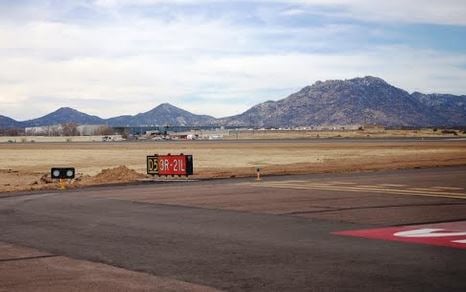Captain Judy’s Corner: Density Altitude
After all, airplanes don’t feel. Or, do they?
How does hot, humid air affect flying?
The cockpit felt like a sauna in the Arizona heat. Not only was I enduring the summer heat, but so was the airplane. How might an airplane suffer from heat? After all, airplanes do not feel? Or do they?
Flying on a cool Florida morning or evening, you will notice ample runway remaining before lift-off and how eager the airplane climbs. Fly on a hot, muggy afternoon, and the runway remaining before lift-off will be far less. The airplane would climb much slower, as well.
Temperature, pressure, and moisture (dewpoint) in the air affects our airplanes’ performance: an increase required in runway length, a reduced climb rate, and decreased performance in cruise and landing.
What is density altitude?
The density of air from atmospheric conditions are one of the most important factors affecting aircraft performance, this is called density altitude. Less dense air causes a reduction in lift generated by the wings and would reduce power output, which reduces the effectiveness of propellers. Density altitude’s definition is pressure altitude corrected for non-standard temperature. Stated differently, an airplane might feel (perform) as though taking-off or cruising at a higher altitude than actual.
It’s actually quite simple understanding density altitude. The more air molecules flowing over the wings, the more lift generated. The more air molecules entering the cylinders allows for burning more fuel, which means more power. Therefore, increasing air molecules increases performance, and decreasing air molecules decreases performance.
How do air molecules increase or decrease in the atmosphere? Atmospheric conditions!
Pressure is the weight of air molecules. Gravity pulls air molecules as close as possible to the ground and these molecules push against each other. The higher air molecules go, the less gravity and pushing against each other. Weighing these air molecules is called air pressure. So, air pressure is less as altitude increases.
Temperature also affects density altitude. The amount of heat in the air makes air molecules move quickly and push against each other. These active air molecules expand and rise quickly.
There are fewer air molecules around us when the molecules are warm and moist because water vapor is lighter than air. Warm, moist air molecules rise even quicker.
How does location impact density altitude?

Sitting in the cockpit before taking off at Prescott, Arizona (KPRC), the airplane has fewer air molecules for lift and power. KPRC airport is located 5000 feet above the sea (MSL) on a plateau between 2 mountain ridges. There are fewer air molecules at 5000 feet MSL than at lower altitudes. On this hot, moist day the air molecules had risen even quicker, creating even fewer air molecules for the wings, engines, and propellers.
High altitude, high temperature, and high moisture content in the atmosphere reduced my airplane’s performance. This is known as the 3 Hs. The airplane’s performance on that day had a density altitude of 10,000 feet MSL. Instead of the airplane performing from the airport elevation of 5000 feet MSL, it performed as if I’d be taking off at 10,000 feet MSL. Under these conditions the 7,000 feet of runway was not enough. What was my alternative? Fly early or late when the temperature was cooler and there was less moisture in the air. Or, wait for another day. Pilots also want to pay attention to density altitude on cross-country flights.
On hot, humid Florida days, density altitude could increase as much as 2000 feet MSL. The airplane will feel as though it’s taking off, climbing, and landing at an airport located at this altitude instead of New Smyrna Beach Airport’s elevation of 10 feet MSL. It is important to understand the effects of atmospheric conditions on the performance of the airplane. Know how your airplane feels before entering the cockpit!

Read more articles by Captain Judy Rice!


Excellent esplanation on Density altitude! An other example should be for an aircraft approaching to an high altitude airport elevation during winter time. Does he affect the rate of descend on glide? speed and break energy on landing? good hint to think about.. Capt.Sergio Antonio Ponzo
Hi Sergio. This is your old friend Michael DeRosa.